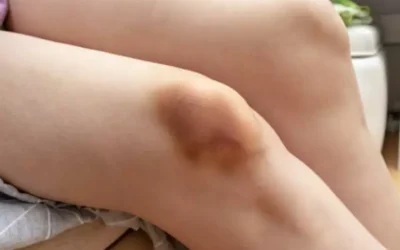Content
As with other diseases, individuals vary in the development and progression of substance use disorders. Not only are some people more likely to use and misuse substances than are others and to progress from initial use to addiction differently, individuals also differ in their vulnerability to relapse and in how they respond to treatments. For example, some people with substance use disorders are particularly vulnerable to stress-induced relapse, but others may be more likely to resume substance use after being exposed to drug-related cues. Developing a thorough understanding of how neurobiological differences account for variation among individuals and groups will guide the development of more effective, personalized prevention and treatment interventions. Additionally, determining how neurobiological factors contribute to differences in substance misuse and addiction between women and men and among racial and ethnic groups is critical.
- Since 2011, the public understanding and acceptance of addiction as a chronic brain disease and the possibility of remission and recovery have increased.
- However, you do have the ability to remove yourself — and any children — from a destructive situation.
- The binge/intoxication stage of the addiction cycle is the stage at which an individual consumes the substance of choice.
- Brain stimulation reward involves widespread neurocircuitry in the brain, but the most sensitive sites defined by the lowest thresholds involve the trajectory of the medial forebrain bundle that connects the ventral tegmental area (VTA) to the basal forebrain (Olds and Milner, 1954).
- Healthcare providers and the medical community now call substance addiction substance use disorder.
In response, ASAM’s Board in 2018 recognized the need for an updated definition of addiction that would be more accessible to many of ASAM’s stakeholder groups, including patients, the media, and
policymakers. Accordingly, the Board appointed a Task Force to Update Terms Related to Addiction and the Treatment of Addiction. With the input of internal and external stakeholders, the Task Force how to break the addiction cycle revised the definition of addiction for use in ASAM’s
policy statements. Thus, all drugs of abuse activate the mesolimbic dopamine system, but much evidence suggests that dopamine-independent reinforcement occurs at the level of the nucleus accumbens, suggesting multiple inputs to the activation of critical reinforcement circuitry in these brain regions (Koob, 1992; Nestler, 2005).
Addiction Treatment Services
With some drugs, especially prescription medications, the individual may enter this stage through psychological dependence before a physical one can form. When this happens, the individual believes that they need the drug to be able to function like a normal person. Here, the drug commonly becomes a coping mechanism for trying times, and then extends to instances where it should not actually be necessary. For example, a patient taking pain medication may begin to over-medicate, as they perceive moderate pain as severe pain. The drug’s use can also become problematic at this point and have a negative impact on the person’s life.
Schematic drawing describing the sequential and cumulative effects of neuroadaptive changes hypothesized to contribute to the neuroplasticity that promotes compulsive drug-seeking. An early neuroadaptation, common to all drugs of abuse and observed after a single injection of cocaine, is increased excitability of the mesolimbic dopamine system reflected in long-term potentiation dependent on changes in glutamate activity. Subsequently, the activation of dopamine contributes to increased excitability of the ventral striatum with decreased glutamatergic activity during withdrawal and increased glutamatergic activity during drug-primed and cue-induced drug-seeking.
NEUROCIRCUITRY OF ADDICTION: NEUROPSYCHOPHARMACOLOGICAL EVIDENCE FROM ANIMAL STUDIES
That’s why it is at this stage that individuals should begin seeking professional help for addiction. If addiction isn’t addressed and treated it can result in overdosing and possibly even death. Even if it doesn’t result in death, addiction can lead to permanent health problems. In fact, sometimes it can take months or even years before the use of drugs or alcohol can turn into an addiction. During that time period, there were will be several different stages that the body will go through as it starts to depend on that substance. Once an addiction forms, a person often remains trapped in a vicious cycle.
What are the 7 steps of the cycle of addiction?
- Initial use.
- Abuse.
- Tolerance.
- Dependence.
- Addiction.
- Relapse.
There are three ways to «bind» yourself from – or place limits on – the behavior to which you’re addicted. Employing these strategies can help you enjoy some version of that behavior without letting it take over. A dopamine hit brings about pleasure and is then quickly followed by pain, or a come-down, in order to keep us motivated, says psychiatrist Dr. Anna Lembke. The members of AA are known to say, “Once an addict, always an addict.” They don’t mean this in a negative way.
Definition of Addiction
For example, people who use methamphetamine for a long time may experience paranoia, hallucinations, and delusions that may be mistaken for symptoms of schizophrenia. And, the psychological symptoms that accompany withdrawal, such as depression and anxiety, may be mistaken as simply part of withdrawal instead of an underlying mood disorder that requires independent treatment in its own right. Given the prevalence of co-occurring substance use and mental disorders, it is critical to continue to advance research on the genetic, neurobiological, and environmental factors that contribute to co-occurring disorders and to develop interventions to prevent and treat them. Stimulants increase the amount of dopamine in the reward circuit (causing the euphoric high) either by directly stimulating the release of dopamine or by temporarily inhibiting the removal of dopamine from synapses, the gaps between neurons.







